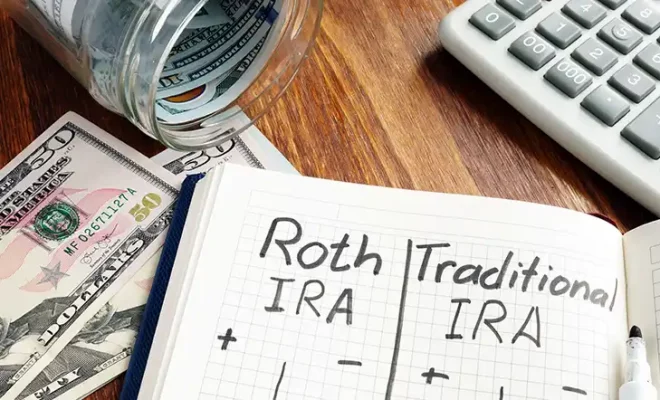7 Steps To Protect Your Retirement Assets and Income
Planning for retirement is arguably the most difficult part of financial planning. It requires you to not only grow your corpus but also find ways to protect it from external factors such as market volatility, inflation, etc. So, if you’re approaching—or have already reached—retirement, it’s critical to consider how to secure your savings and assets to live a comfortable retired life.
Additionally, you also need to consider certain questions such as how you can protect your retirement savings and assets against factors such as inflation and market volatility. There is no straightforward answer to this; however, you can take certain steps to secure your assets against the aforesaid factors. If you need help in devising a strategy that will allow you to protect your assets against the effects of inflation, market volatility, and more, consider consulting with a professional financial advisor who can guide you on the same.
Read below to know more about how you can protect your retirement assets and income:
Table of Contents
Steps to protect your retirement assets and income
1. Preparing a healthcare budget
With longer life expectancies and medical costs that have historically risen faster than general inflation—particularly for long-term care—retirees must manage their health care spending. Long-term care costs and their influence on individuals and their families’ futures should be prioritized when discussing retirement planning with family and advisors.
Fidelity Retiree Health Care Cost Estimate, in 2021, stated that an average retired couple aged 65 would require around $300,000 in after-tax savings to pay health care bills. Now, many people may likely live longer and have to pay more money. Do note that this figure excludes long-term care (LTC) costs. Thus, having a separate fund set aside for long-term care expenses could be a good idea to secure your retirement income.
2. Making a plan for taxes
Often, individuals do not understand the implication and effect of taxes on their retirement savings and assets. Right from inheritance to estate to capital gains, taxes can heavily eat into your gains, in return diminishing your retirement corpus. The right way to plan for retirement is to keep in mind all present and future taxes that your savings, assets, and income can be subjected to. It is advised that you consult a financial advisor for appropriate guidance.
3. Preparing yourself for inflation
Over time, inflation can erode the purchasing power of your money. Inflation affects your retirement income by raising future expenses of goods and services, thereby, lowering your future purchasing power. Even a moderate inflation rate can have a major impact on the purchasing power of retirees.For example, if your portfolio is heavily concentrated in debt and securities, there may be a good chance that inflation may eat into your returns.
Thus, as an individual, it is paramount that you include inflation as a major component before investing, buying, purchasing, and selling assets. Annual COLA (cost-of-living adjustments) and market-related performance assist Social Security, and certain pensions, annuities, and investments such as growth-oriented stocks or ETFs, Treasury Inflation-Protected Securities (TIPS), real estate securities, commodities, and more can help to keep up with inflation. Doing so can also help avoid erosion of returns and can help protect your retirement assets.
4. Taking into account long-term-care insurance
Insurance is a very important factor to consider when planning retirement. Mishaps can happen without notice which may put a significant dent in your retirement assets and planning.
Long-term care insurance helps provide coverage to individuals aged 65 and above who may suffer from disability, chronic conditions or require nursing care, home health care, and other personal day/night care staff.
Not planning on such coverages can become a major burden and burn a large hole in your pocket later on. Individuals are better off planning for such coverages to prevent wealth erosion in their retirement years.
5. Identifying your retirement time frame
The bedrock of a smart retirement strategy is estimating your expected retirement age. The longer you put off retirement planning, the lower your corpus accumulation may be. Also, if you’re young and have more than 30 years until retirement, you may have higher risk tolerance and can invest your money into high-risk assets like equities, commodities, and more. Stocks have traditionally outperformed alternative investments like bonds over long periods despite their volatility.
But as you grow older, your risk tolerance may dilute. It would be considered prudent to look for asset protection and focus more on income and capital preservation. It would be in your best interest to be clear about the age that you wish to retire and work toward accumulating a sizable corpus by the time you reach the said age.
6. Estimating your retirement spending requirements
Realistic projections of post-retirement spending habits may aid in determining the amount of savings and retirement corpus that would be needed.
Many retirees claim that their yearly expenditure after retirement would be just 70% to 80% of what it was before. However, this assumption can be flawed. Few individuals may have debts and mortgages to pay, while others may experience unexpected medical costs. While some retirees may want to pay for their children’s education or purchase a house. In such scenarios, an individual may need more money than they may have anticipated they might need. These expenses must be accounted for when you are creating your overall retirement strategy.
Thus, precise retirement spending objectives can prove to be of great help in formulating the right retirement plan and also protecting your retirement assets.
7. Avoiding excessive withdrawal
Spending your funds too quickly could jeopardize your retirement income. As retirement approaches, it may be best to have conservative withdrawal rates. Your 401(k)s, traditional IRAs, and even Roth IRAs all have different rules and are subjected to different withdrawal rates and taxes.
Now, if you do not take measures to lower your taxability, these rates and taxes can heavily eat into your retirement corpus. Thus, it becomes important to be mindful of them and plan withdrawals in accordance. Excess withdrawals can be counterproductive and may derail your retirement planning.
To conclude
A typical retirement strategy may aim to generate returns covering annual inflation-adjusted living expenditures while protecting retirement assets and maintaining the portfolio’s value. While this may appear cumbersome, it may be in the best interest of retirees to plan how they want to spend their retirement corpus including identifying ways to best grow and protect their assets. You can consult a qualified financial advisor to aid your retirement planning.
Use the free advisor match tool to match with an experienced and certified financial advisor who will be able to guide you effectively on how to best protect your retirement assets and income. Give us basic details about yourself, and the match tool will connect you with 1-3 professional financial fiduciaries that may be suited to help you.

















